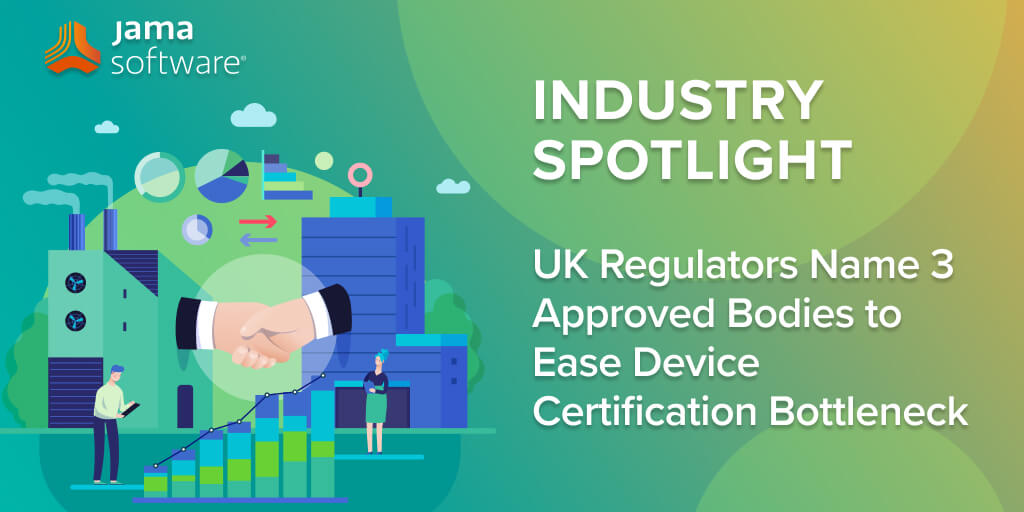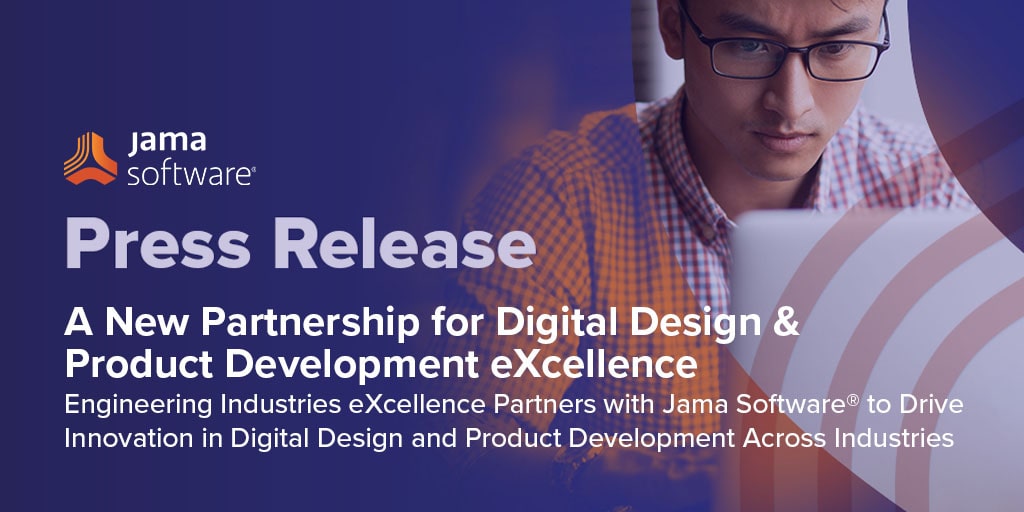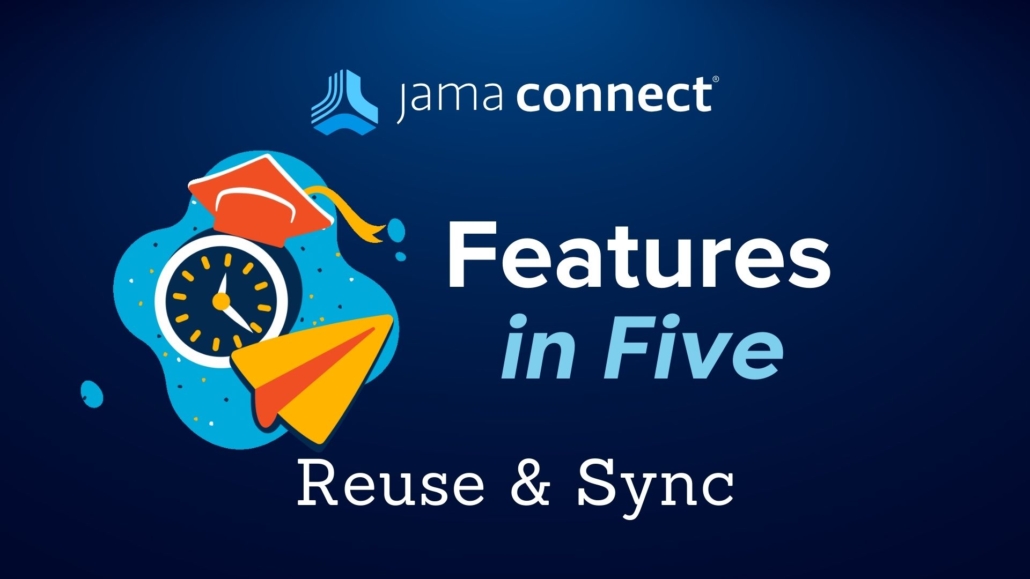
In this video, we’ll discuss the reuse & sync capabilities in Jama Connect.
Jama Connect® Features in Five: Reuse & Sync
Learn how you can supercharge your systems development process! In this blog series, we’re pulling back the curtains to give you a look at a few of the powerful features in Jama Connect®… in about five minutes.
In this Features in Five video, Zeb Geary – Principal Professional Services Consultant at Jama Software® – will go over the reuse & sync capabilities for requirements management in Jama Connect.
VIDEO TRANSCRIPT
Zeb Geary: Welcome to this segment of Features in Five. I’m Zeb Geary, a Principal Consultant at Jama Software. In this video, I’ll explain how your team can reduce time to market and improve quality by reusing and synchronizing requirements and other content in Jama Connect.
Teams often struggle to build on existing work when requirements and tests are spread across documents and systems. Lacking a live trace, they must manually identify and copy related content, increasing the risk of rework and gaps. Additionally, teams tend to lack visibility across efforts, causing necessary changes to not propagate across reuse content, potentially impacting quality and disconnected product design efforts.
Jama Connect simplifies and enhances the process of reusing requirements and verifications by allowing you to copy selected content with its containers and its traced items. Synchronization ensures visibility and enables key use cases such as parallel product definition, common content libraries, and product variance. Let’s look at reuse and synchronization in Jama Connect.
RELATED: Traceable Agile – Speed AND Quality Are Possible for Software Factories in Safety-critical Industries
Geary: Here in Jama Connect, I’m looking at a project that we would consider a library or potentially a platform of 150% of our requirements. For this example, I’ve started building out the requirements and verifications for a new Jama Connect project, but I’ll be incorporating some standard or common requirements from this project. And through reuse, I’ll save time and ensure consistency with the platform.
I want to bring these common display requirements into my project from the platform. I see that these requirements have related verifications, and I want to bring these into my project as well. I’ll go ahead and select to reuse this folder. The reuse window shows me what I’ve selected for reuse and provides me with important options that reveal the significance of this capability. The first option determines if I will enable synchronization. If enabled, Jama Connect will establish a connection between the result of my reuse and its source so that I can monitor them for differences. I have options to include or exclude tags, attachments, and links, and to form a relationship to my source item from the resulting copy.
The final section of options determines how I will handle related content outside of my selection. Recall that the selective requirements have downstream verifications that I want to make sure I bring into my project. I will select the option to include related content and to mirror the relationships in my project. This saves me a lot of time since I will not have to recreate these relationships in the new project and removes the risk of missing verifications related to my selected requirements.
Finally, I indicate where I want to reuse the content to. I’ll select my project and I can have Jama Connect copy the project hierarchy as well into my target project, or I can select an existing location in my project. I selected my location and I will reuse with Sync.
RELATED: Buyer’s Guide: Selecting a Requirements Management and Traceability Solution for Software Development
Geary: In my project, the common display requirements have been reused with their related verifications. Here in my project, I can use Sync View to see how my reused items may differ from the library or any other project using these common requirements. Let’s check out this folder called “Scheduling.”
I can see from our sync items view that I’m in sync with the platform, meaning there’s no difference there, but we have a parallel effort that I am out of sync with. In Compare View, I can see exactly how we differ and bring those differences, if necessary, into my project. Sync View provides me with the visibility I need to make sure I’m working with the latest applicable requirements in my project. Here I will update the requirement text and I’ll create the missing requirement in my project. Now my project and this parallel effort are in sync.
As we have seen, reuse and synchronization is a key feature supporting critical requirements and verification activities. A Jama Software consultant can help you properly support your process with reuse and sync. If you have a Success Program with Jama Software, see our offerings under Improving Your Process to request assistance from a consultant. Your customer success manager can help you learn more about Jama Software Success Programs. If you would like to learn more about how Jama Connect can optimize your product development process, please visit our website at www.jamasoftware.com.

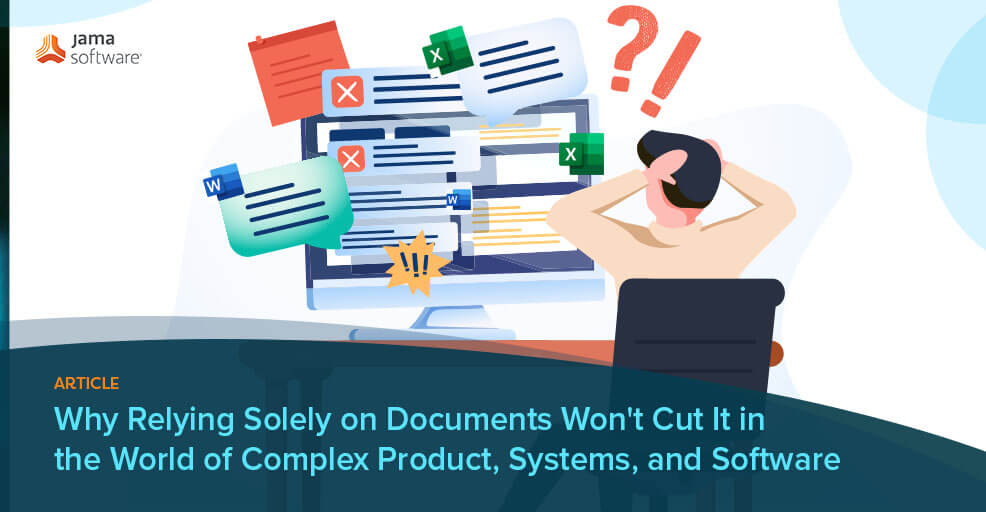

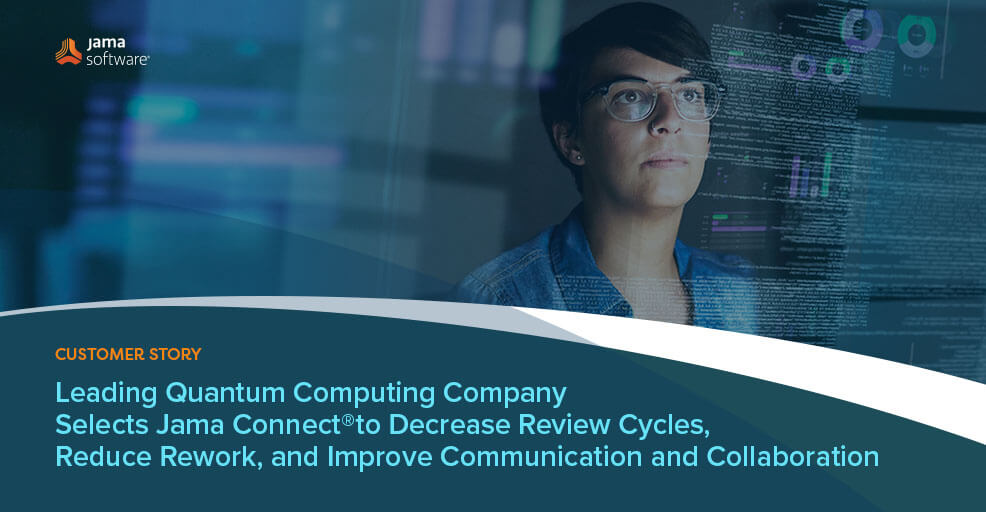



![[Webinar Recap] Compliance Made Easy with Jama Connect® for Automotive and Semiconductor Development [Webinar Recap] Compliance Made Easy with Jama Connect® for Automotive and Semiconductor Development](https://www.jamasoftware.com/media/2023/09/wb-2023-09-27_Compliance-Made-Easy.png)
